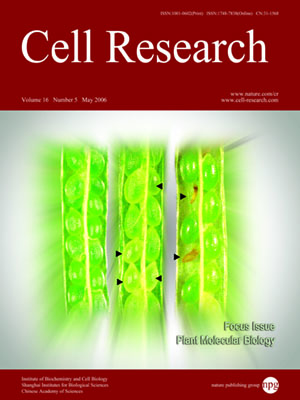
Volume 16, No 5, May 2006
ISSN: 1001-0602
EISSN: 1748-7838 2018
impact factor 17.848*
(Clarivate Analytics, 2019)
Volume 16 Issue 5, May 2006: 413-426
REVIEWS
Ubiquitination-mediated protein degradation and modification: an emerging theme in plant-microbe interactions
Li-Rong Zeng, Miguel E Vega-Sánchez, Tong Zhu, Guo-Liang Wang
1Department of Plant Pathology and Plant Molecular Biology and Biotechnology Program, The Ohio State University, Columbus, OH 43210, USA; 2Syngenta Biotechnology Inc, Research Triangle Park, NC 27709-2257, USA; 3Rice Genomics Laboratory, Hunan Agricultural University, Changsha, Hunan 410128, China
Correspondence: Guo-Liang Wang, Li-Rong Zeng(wang.620@osu.edu zeng.17@osu.edu)
Post-translational modification is central to protein stability and to the modulation of protein activity. Various types of protein modification, such as phosphorylation, methylation, acetylation, myristoylation, glycosylation, and ubiquitination, have been reported. Among them, ubiquitination distinguishes itself from others in that most of the ubiquitinated proteins are targeted to the 26S proteasome for degradation. The ubiquitin/26S proteasome system constitutes the major protein degradation pathway in the cell. In recent years, the importance of the ubiquitination machinery in the control of numerous eukaryotic cellular functions has been increasingly appreciated. Increasing number of E3 ubiquitin ligases and their substrates, including a variety of essential cellular regulators have been identified. Studies in the past several years have revealed that the ubiquitination system is important for a broad range of plant developmental processes and responses to abiotic and biotic stresses. This review discusses recent advances in the functional analysis of ubiquitination- associated proteins from plants and pathogens that play important roles in plant-microbe interactions
Cell Research (2006) 16:413-426. doi:10.1038/sj.cr.7310053; published online 15 May 2006
FULL TEXT | PDF
Browse 1916


